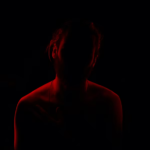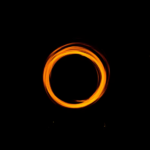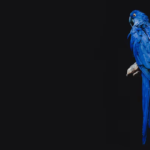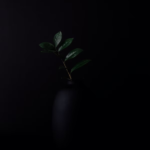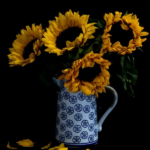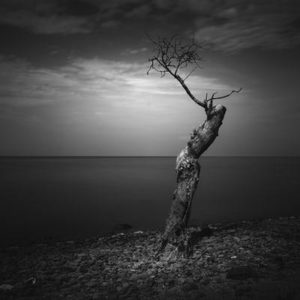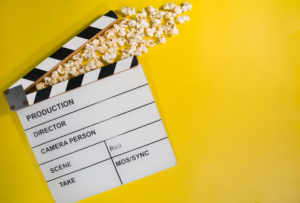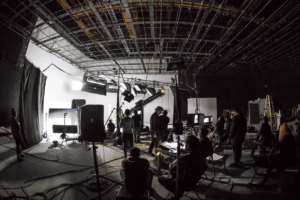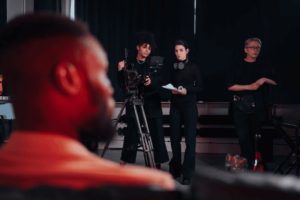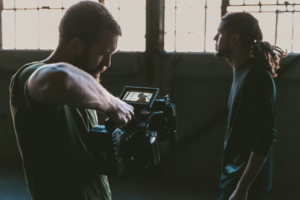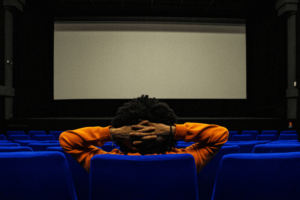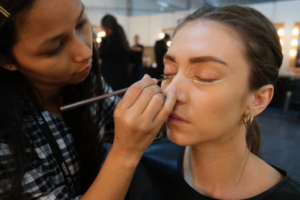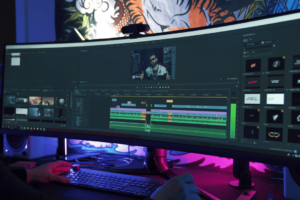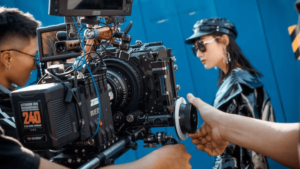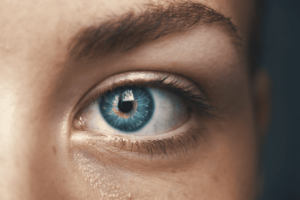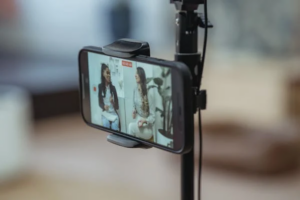Black-and-white photographs are pretty famous. If you take a quick look at your social media feeds, you will see how many people use black backdrops to photograph food, flowers, animals, objects, people, and a variety of other items.
Photographs of subjects against a black backdrop can appear tidy and professional while visually pleasing. You can use this method in practically any type of photography, including portraits, still life, wildlife, nature, food, and product photography. Did you know that you do not even need a black backdrop to produce photographs with black backgrounds? Yes, regardless of the color of the environment, you can have a pure black set in pictures, and it is not that tough to learn.

Even if you have never used a black backdrop, if you have a solid grasp of light, know how to manipulate light, and learn how to use your camera, you will be able to create unique photographs that stand out against it.
In this post, we will look at how to get a black backdrop in images in many ways. To get the desired effects, you can utilize one or a combination of the strategies.
Controlling the lighting condition, or the amount of light in the scene is the first and most significant step toward a shot with black background (on subject and background). The fantastic thing about cameras is that they occasionally record light in a different way from what we see with our eyes. This is because cameras have a lower dynamic range than human vision.
Things to be Considered Before Taking a Picture With a Black Background
- Under natural lighting conditions, the most crucial need for creating a perfect black backdrop is an excellent contrast in light in the image — think of situations with dark shadows and bright light.
- When the light on the subject is exceptionally bright relative to the light in the backdrop, metering for the subject completely darkens the background. So, keep an eye out for scenes or situations similar to this.
- Also, the light should fall on the subject at an angle rather than directly in the front. This increases the likelihood of the background being illuminated. The light should have a specific intensity level to get a black background. You’ll achieve a good contrast between the subject and the background using this light.
- To achieve the desired results, you’ll need to experiment with your camera’s exposure settings. This may differ from the locations you regularly use for different lighting and backdrops.
- As every camera and dynamic range are distinct, there are no universal settings for all scenarios and cameras. So, after you have a basic understanding of how this strategy works, utilize the settings below as a starting point and see what works best for you.
- More light on your subject than on the backdrop will make it easier to achieve a black background than in other instances.
- In other cases, having the background further away from your subject might also help.
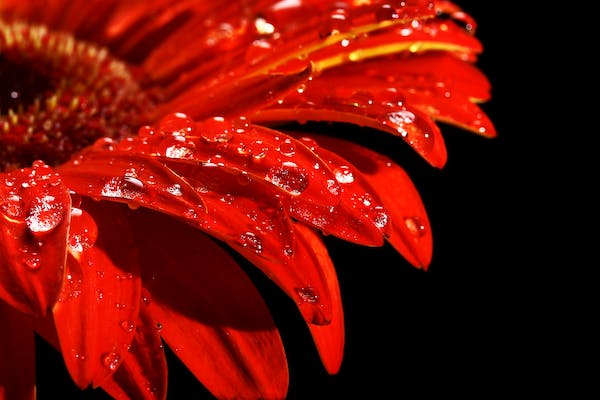
How to Create a Black Background?
Use a Black Backdrop
Using a dark or black backdrop is one of the simplest ways to achieve a dark or black background in your photographs. This way, you won’t have to be concerned about distracting backgrounds or excessively managing light to eliminate distractions. Instead, change the direction of the light source and how it falls on your topic.
You can make use of any dark sheet of fabric, but a black velvet background or another non-reflective material is suggested. Use a matte-finish substance. Remember that even if you use a black backdrop, you will not get a perfectly black background if the setting is too close to the subject or allows the light to fall on the scene.
The most crucial component in achieving a dark background is regulating light. This is especially true with modern cameras that have a wide dynamic range.
Let us look at the many scenarios and methods for achieving a flawlessly black background in images.
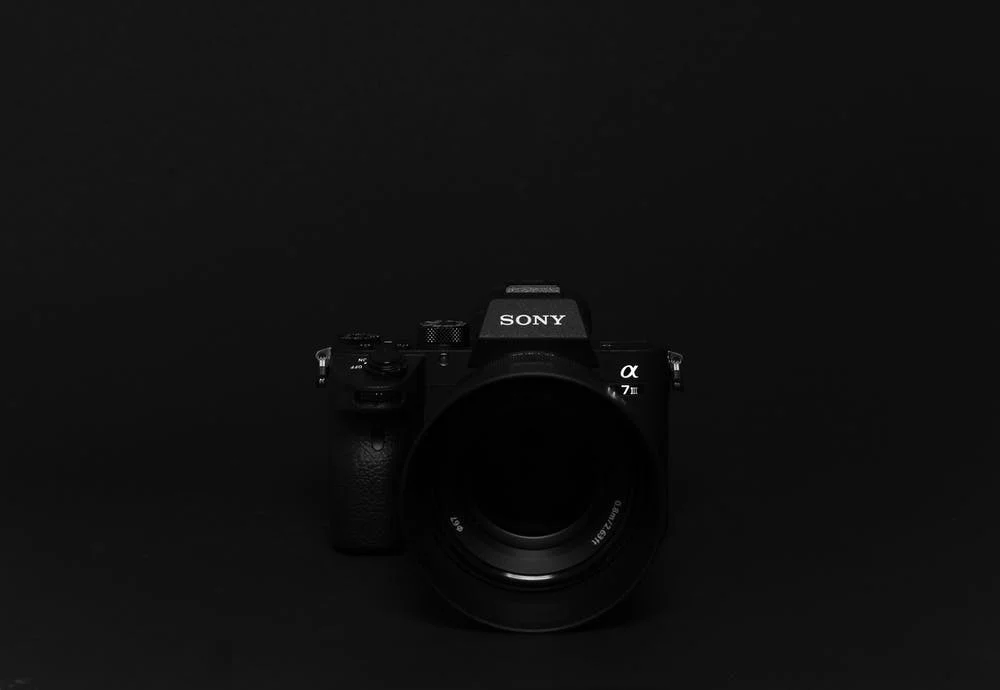
Make a Black Background Through Lighting
Did you know that you can use a black background in your photos if the background is white? We will speak about it here and how to make a variety of other types of backgrounds look black in a shot using various ways. One of these options may be appropriate for the situation you’re shooting or for post-production.
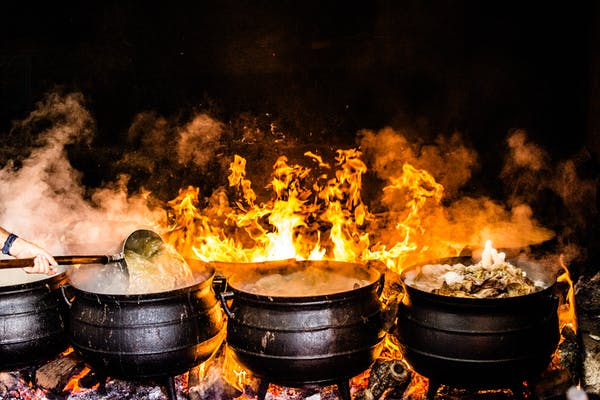
How to Make White Background Black?
This may seem impossible, but in a controlled lighting environment, you can utilize just one light to make even a white background look black in your images, similar to many of the ways and strategies outlined above.
In traditional lighting arrangements, you can be spotlighting your subject from an angle while simultaneously illuminating the background. As a result, the background color and/or light are captured in your photographs.
A dark background is now required. Consider what needs to be done to prevent the light from falling on the white background. Here are some suggestions:
- You should not illuminate the background; the image will be recorded with a white background if you do so.
- Turn the light to one side, not hitting the background.
- For better results, you may need to utilize a flash.
- Capture the image after metering the light for the subject.
- Even if the background is white, you should now have a stunning image with a black background in your photograph.

With the limited dynamic range of cameras that we explained before, we can achieve a black background in the camera. However, our eyes can see more tonal or light intensity fluctuations compared to what a camera can capture. Examine numerous natural and artificial lighting circumstances and how they might be used or adjusted for black backgrounds in photography.
How to Create a Black Background From a White Wall
Use Natural Light to Produce Black Background
In an indoor, studio, or outdoor setting, you may create stunning images with a black background using only natural light. Position your subject in the brightest part of the scene and keep the light intensity in the surrounding regions low. For example, to stop stray light from illuminating the backdrop when shooting near a window with natural light, situate your subject close to the window where the light is bright and shut any other windows and doors in the room and background. Also, turn off any other lights in the room to surround your subject with darkness.
Look through the viewfinder. Move your subject and the camera around until the subject is exposed correctly against the dark backdrop. If the light in the room is excessively bright, the surrounding regions are brilliant, or there is an uncontrollable ambient light, you can use a black or dark-colored blanket or spread to create a black background.
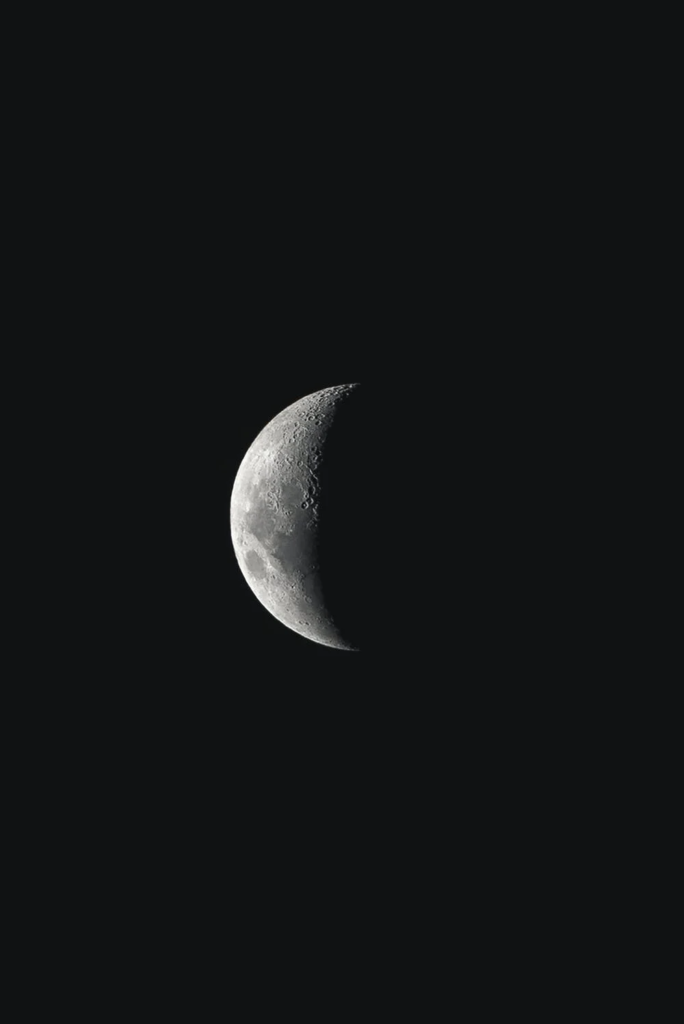
Controlling the Light
Suppose you are shooting outside and want a black background. In that case, find a spot with high contrast between the subject’s light and the background light. Although you cannot control natural light, which is sunlight, you can look for contrasty areas where this technique can be used.
Look for a spot with plenty of sunlight and a shaded space nearby. You can find this in the shadows of buildings and trees, near shrubs, dark tree trunks in the shade, gloomy doorways, and so on. Place your subject in the light directly in front of the darkened area – this is the point where the light and shaded areas meet. You should meter the subject and make the background dark.
If the background is not dark enough, use a reflector to bounce some light onto your subject.
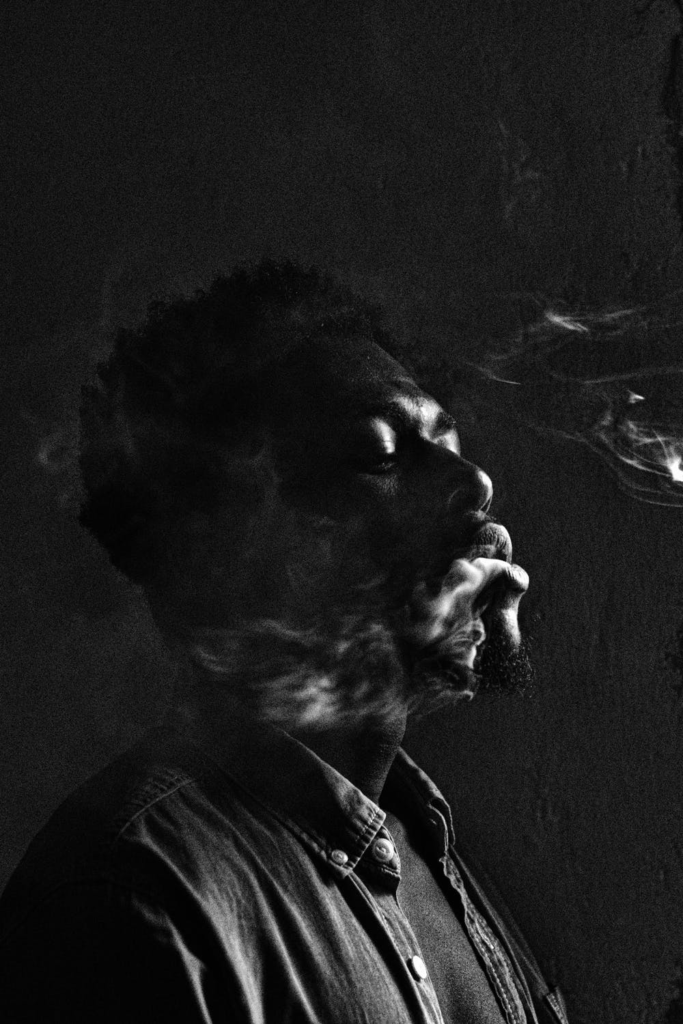
Light the Subject Only and Not the Background
We saw how to position the subject to achieve a black background in the last part. Still, you must also ensure that the light used to illuminate your subject does not illuminate the background because we do not want to capture background details in this style of photography.
Whether you utilize a black background or not, lighting is crucial for photography. It would help if you only lighted the subject, not the background because otherwise, the background features would show up in the final photograph.
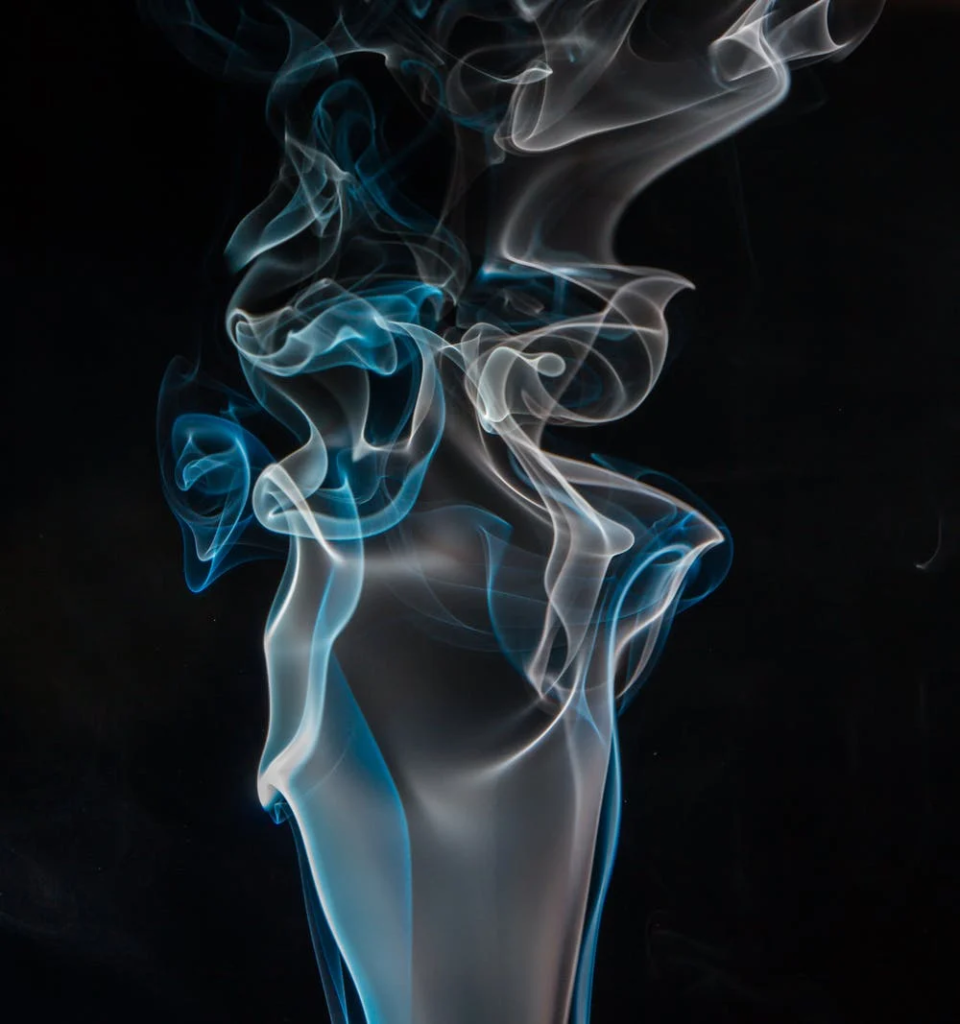
Use Studio Lights to Create Black Background
Artificial lighting gives you additional options and controls over how you light your topic in the studio. Try one of the following tips if you do not have a dark background or if your background is not dark enough.
- You will need to fine-tune the intensity of light falling on the subject by modifying the distance between the light source and the subject or adjusting the light intensity
itself. If you’re utilizing flash to illuminate your topic, increase the intensity.
- You will also want to keep a certain distance between the subject and the background so that light doesn’t fall on it and highlight it. Moving the background further away can make it appear darker in comparison.
- You might need to add some backlighting at an angle to give your subject some definition and detail so that it doesn’t blend in with the background. When dark items in the frame need to be separated from the background, this is essential.

Use Camera Flash to Create Black Background
When you use a flash, you instruct the camera to capture only the light from the flash in the scene. To achieve a black background, adjust a few parameters and then utilize the flash to illuminate the subject when firing the shot. This will allow you to create a black background no matter where you are or what time of day it is. Here is what you should do:
- Make sure your camera is set to manual mode.
- Set the shutter speed to the camera’s and flash’s maximum flash sync speed. Depending on the camera and flash used, the sync speed is usually 1/200s or 1/250s.
- Reduce the ISO to the smallest value achievable. Depending on your camera, 100 or 200.
- It would help reduce the aperture value until the image is entirely black. Start with f/5.6, depending on the amount of available light in the location. Take a practice shot. If the image is not black, reduce the aperture to f/8 and so on until you have a dark picture.
- Place the flash where you want it to brighten your subject, but make sure it does not shine on the background. Illuminating subjects at a 60-90 degree angle should be enough.
- You can use light modifiers such as umbrellas to alter how light falls on your subject and prevent it from falling on the backdrop.
- Experiment with the flash power and aperture value until the subject and a black backdrop are correctly exposed.

Use Low-Key Lighting Technique to Create Black Background
Low-key lighting can create photos with less contrast against a black background. You only need one camera and one light source to get fantastic photographs. This type of lighting will help pictures have more depth and emotion.
The lighting is comparable to what we have seen in previous portions. Prevent light from falling in the background. Seek side lighting and utilize a diffuser to soften the light and limit the light falling on the subject. You do not want the image to be ruined by unwanted shadows.

Exposure Settings to Create Black Background
When there is a significant contrast between the light on the subject and the light on the backdrop, metering for the subject will usually result in a dark or black background. You can experiment with the following camera settings:
- Reduce the ISO to the lowest setting feasible.
- Use the fastest shutter speed you can.
- Use spot metering to measure the light only where your subject is, thereby darkening the background.
- If you are still having trouble getting the results you want, try narrowing down the aperture values to see if that helps. This will be required when the light on the topic is excessively bright.
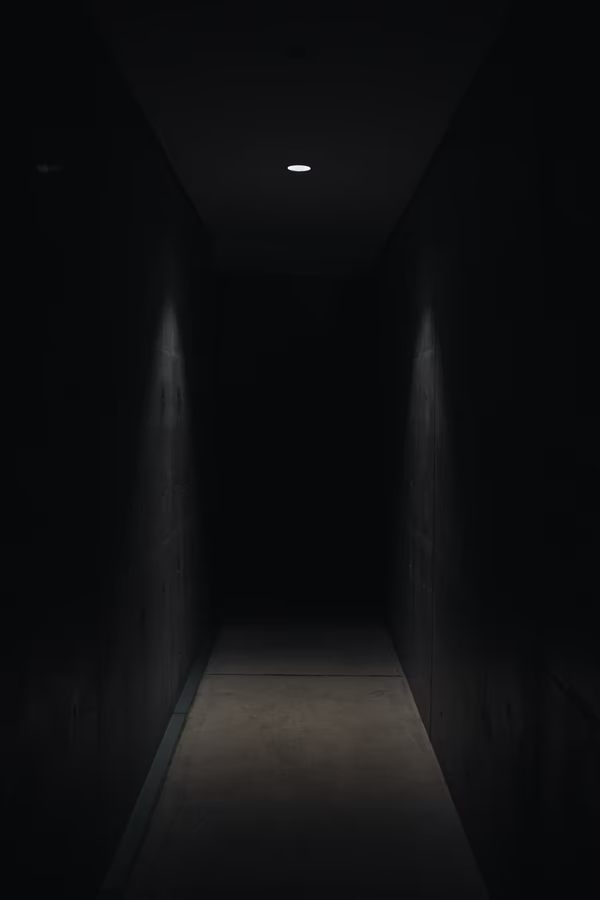
Use Negative Exposure for Black Background
In a camera, exposure compensation is a feature that allows you to change the exposure from the camera’s default setting. It overrides the camera’s light meter’s exposure settings and either lightens or darkens the image depending on the type of exposure compensation selected. Negative exposure compensation, often known as negative exposure, can create a dark backdrop. This is especially useful when dealing with subjects and environments over which you have little control, such as wildlife, streets, and so on.
Set the camera to negative exposure (you could take a test shot or two to have the settings right).
When utilizing negative exposure to create a black backdrop, keep the following guidelines and considerations in mind:
- You must pay close attention to your subject and release your shutter at the appropriate time.
- When your subject is in a bright area against a dark background, you’ve captured the right moment. In addition, the distance between the subject and the environment should be sufficient to cast the background in a dark or black hue.
- Choose locations where the sun shines brightly on the subject or where there is dappled light in a canopy with the subject in a brilliant point of light, and the rest of the scene is dark.
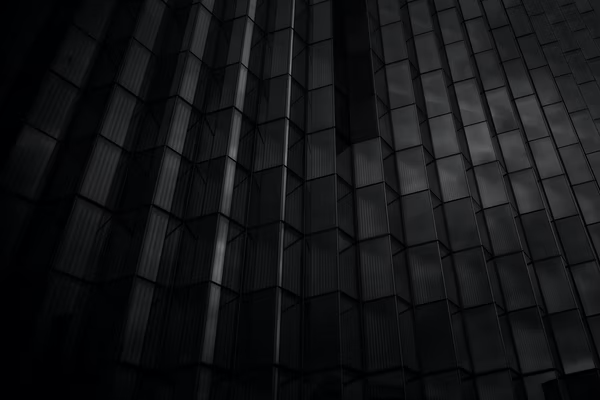
So, how much negative exposure should be shared? This is very dependent on the lighting, setting, and topic. Negative exposure values should be used to control the amount of light depending on the amount of light. Bright sunshine, for example, is ideal for this style of photography because it allows you to be negatively exposed to very dark backgrounds. When you correctly adjust exposure for the subject and the lighted portions, the remaining sections will be completely black.
How to Create a Black Background?
How to Create a Black Background for Portraits?
Portraits can be photographed indoors, in a studio, or outdoors, and you can achieve black background without using a black backdrop. We have already examined many approaches that can be used to accomplish this. Look for spots with bright light and shade when you are outside. Use the shaded area as the background and place your subject in the light. When shooting indoors with window light, you can use this technique.
Look for the light and observe how it falls on your subject when photographing street or environmental photographs. For example, wait for your subject to stroll into a patch of light when shooting on the road. To get a black background in the pictures, make sure your subject is bright and apply a contrasting dark background.
Adjust camera settings until you get a black image when shooting with artificial light. Then, when the shutter is released, use a flash to illuminate your subject, and you’ll get a nicely lit portrait with a black background. The settings and other significant elements you must consider are described in the preceding sections.
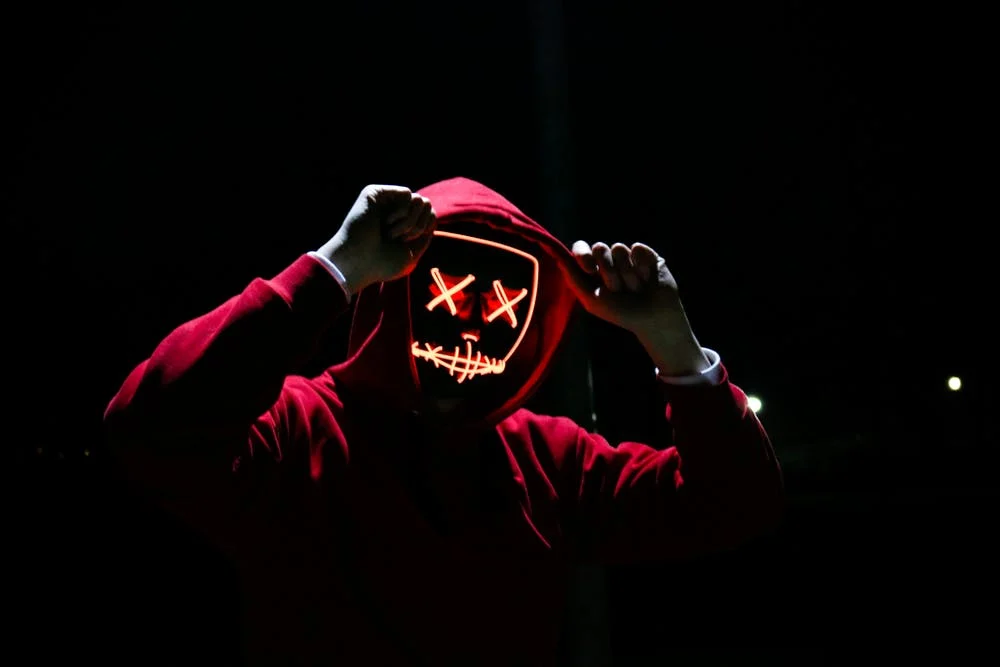
How to Create a Black Background for Still-Life Photography?
The procedure is relatively similar to that of photographing portraits. Consider your subject to be a model for portrait photography, and set up backgrounds and lighting like you would for a portrait. Use a low iso, a quick shutter speed, and a small aperture. If your subject is white or brilliantly colored, you could use negative exposure.
Primary window light from the afternoon or morning sun, alongside proper backdrop separation, will result in visually pleasing black-and-white still-life photographs. Still-life images with dark backgrounds look excellent, and they should appear much better with a dark black background. If you own a black backdrop that you can use, go ahead and use it.
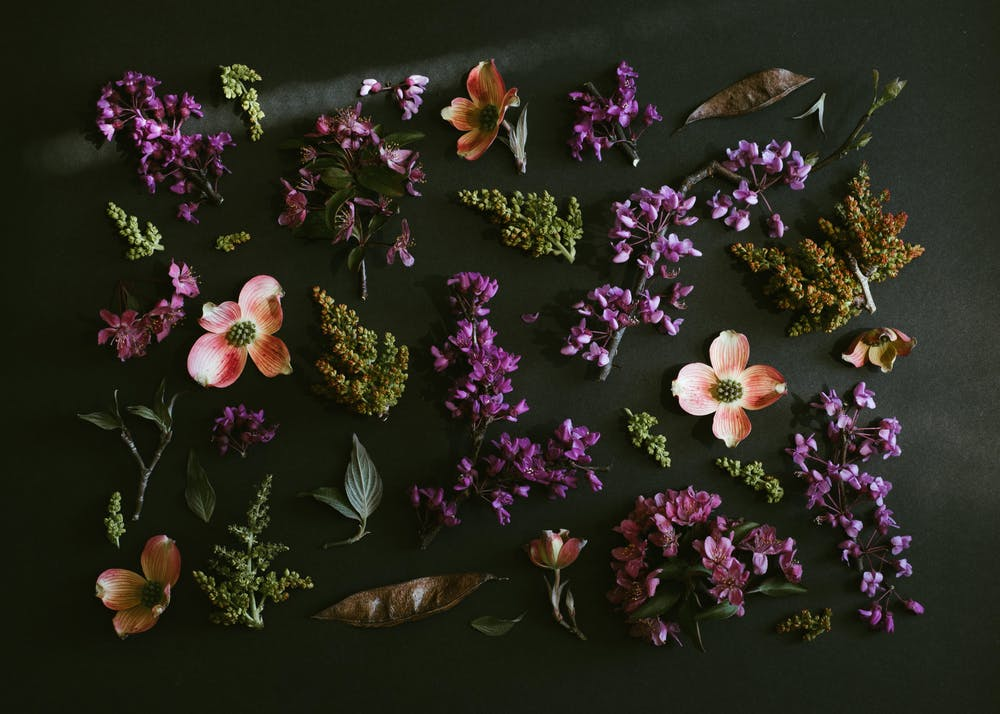
How to Create a Black Background for Wildlife Photography?
Using a dark background in wildlife photography can add a wow element to an otherwise basic image. In some cases, it can also remove unwanted distractions and add a subtle atmosphere to a poorly lit image, especially if the sunshine is too bright. To obtain studio-quality photos, apply the above-mentioned negative exposure technique for wildlife photography.
It is preferable to use spot metering to ensure that your subject is exposed correctly. Make careful subject selections because you won’t always be successful in photographing dark animals with this approach unless you have some form of backlight to help with depth and separation.
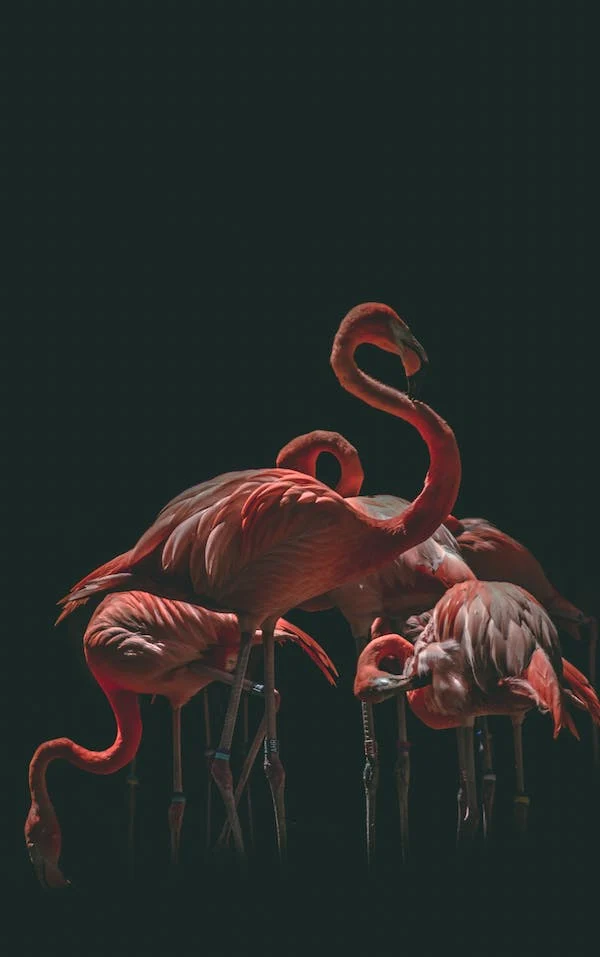
How to Create a Black Background for Nature Photography?
You will have some control when photographing flowers, bugs, and other similar items in nature because you may move around and hunt for the correct contrast in light to achieve a stunning black backdrop. However, suppose you want to achieve this effect in a landscape. In that case, you should always keep looking out for bright light areas and locations where there is a glimpse of sunlight, such as in a valley or on a mountain peak, so you can make use of that contrast to photograph a scene or at least part of a scene against a black background.

Camera Settings to Create Black Background
Regardless of the color or type of background you have, employing the appropriate camera settings will help you get a black background. Although camera settings have already been discussed, here is a list of all the options you should be aware of in one location.
To create a black backdrop, you will need to shoot in manual mode to understand the exposure triangle and reciprocity rules to help you regulate exposure. Try out these camera settings and adjust them to fit your needs:
- Use your camera’s lowest ISO setting.
- Increase the shutter speed as much as possible. Set the shutter speed to flash sync speed if you use a flash.
- See how the frame looks with a reasonably narrow aperture value like f/5.6. To check if you have a dark background, take a photo for testing purposes. If you do not get a black background, you can narrow the aperture even more.
- When the shutter is released, use the camera flash to illuminate your subject. You might need to utilize a diffuser to adjust the light and have some soft light falling on the subject.
- In most circumstances, spot metering aids in getting the exposure right on the subject while keeping the backdrop dark or black.
- Negative exposure is helpful in situations where the light is exceptionally intense.
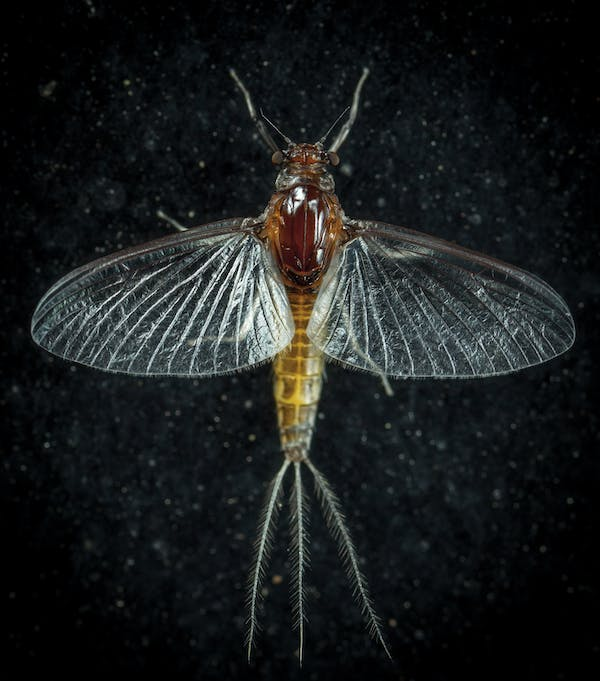
Tips to Capture Perfect Black Background Pictures
Here are some pointers to help you achieve a black backdrop in your images:
- It is important to focus your lighting on your topic rather than the background. When using artificial lighting to illuminate your topic, this is critical.
- The more light on your topic, the more likely a black background will appear. This is especially true when shooting outside.
- Remember that even though the background is black, if you illuminate the subject and the background with the same quantity or intensity of light, your background will not appear as dark as you like.
- To avoid bright regions in the backdrop, choose the correct camera angle and subject position.
- When shooting outdoors, look for darker regions. On a bright sunny day, you can discover these near regions with rich green vegetation, shadows of trees, buildings, and other structures. You can get photographs with black backgrounds by placing your subject just where the shadow and light intersect and using the shadow as the background. For the light on your topic, you will need to meter exposure.
- Maintain as much distance as possible between the topic and the background. As a result, the light will not highlight the background in the same way it does your subject.
- Make sure there is no light reflected in the backdrop. If you want to create a black background, avoid utilizing glossy materials.
- Use the appropriate light intensity, angle, and/or direction.
- You may save a lot of time in post-production if you set up the light right and shoot.
- If other lights in the room or surrounding regions (ambient light) can’t be turned off but are casting strange colors or light on your subject, the simplest method to solve the situation is to utilize the flash at full strength.
- Another suggestion for working with difficult light in a place is to use colored gels that match the light. This will help you avoid color casts, and you may modify the temperature later in post-production.
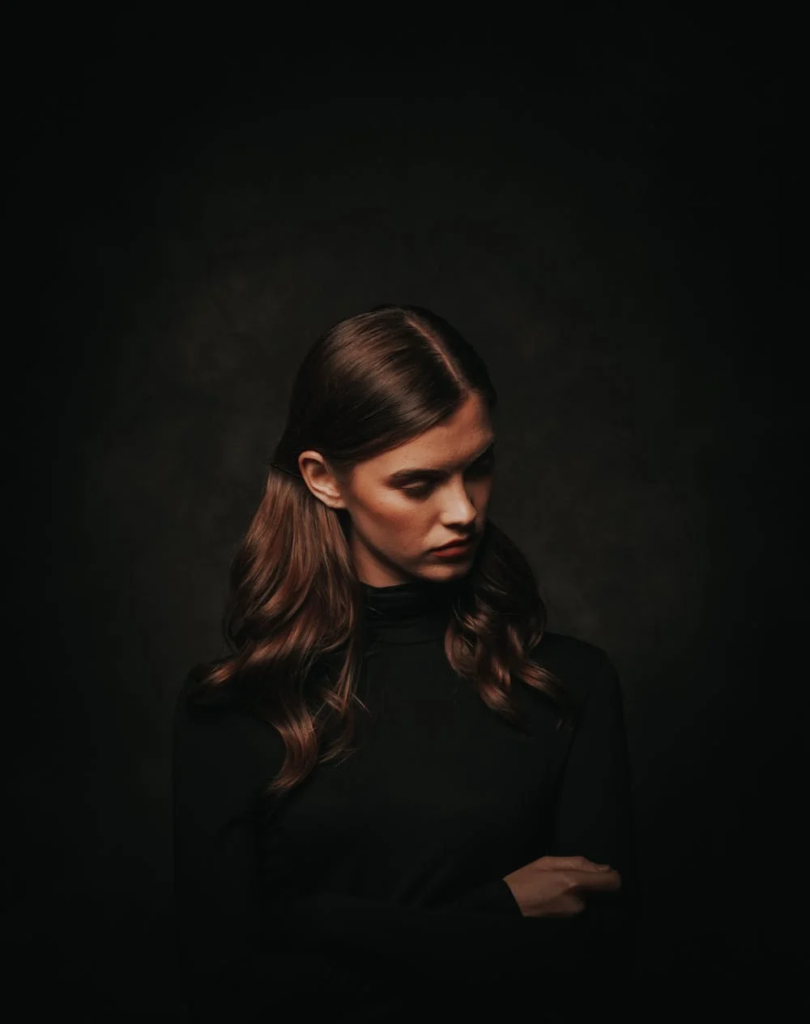
Post-Processing Techniques for Black Background in Photographs
There are instances when you may not obtain the ideal black background on camera, or there are areas in the black areas that need to be improved. In either case, you may need to alter your photographs in post-production using simple sliders, brush tools, and other tools to reach a satisfactory result.
- Most of the time, a small change to the shadows and black slider will be enough to make the image’s backdrop perfectly black. When there are no bright areas in your background, this works great.
- Drag the shadows and black sliders to the left until the desired effect is achieved.
- When photographing outside, bright areas in the backdrop may need to be touched up. In these cases, paint over the bright regions with the brush tool and shade until you achieve the desired results.
- To acquire excellent contrast in the image and work in the highlight and shadow areas, utilize the tone curve.
- If there are any minor bright areas, you can use the healing or clone tool to erase them.

Gallery
Conclusion
The truth is that most photography is based on light manipulation. Photography with a black background is no exception. So, keep your eyes open once you’ve figured out how to produce the effect of a dark background. Look for circumstances where the subject receives more light than the background. Examine the scene’s shadows and how the light falls on the various objects.
Finally, try it out by following the procedures outlined here. Black background photography will become second nature to you in no time. It might become your personal favorite.


